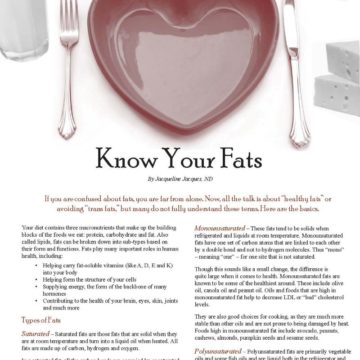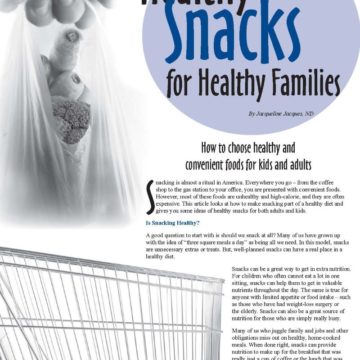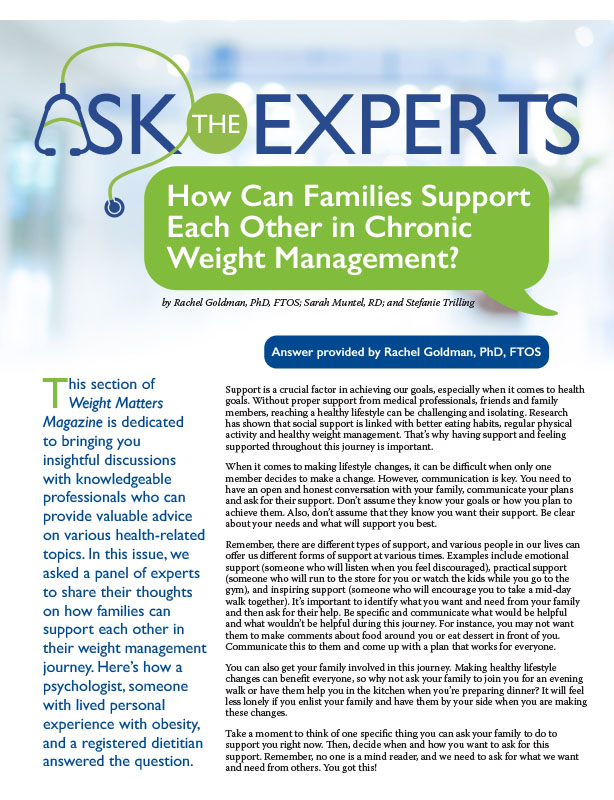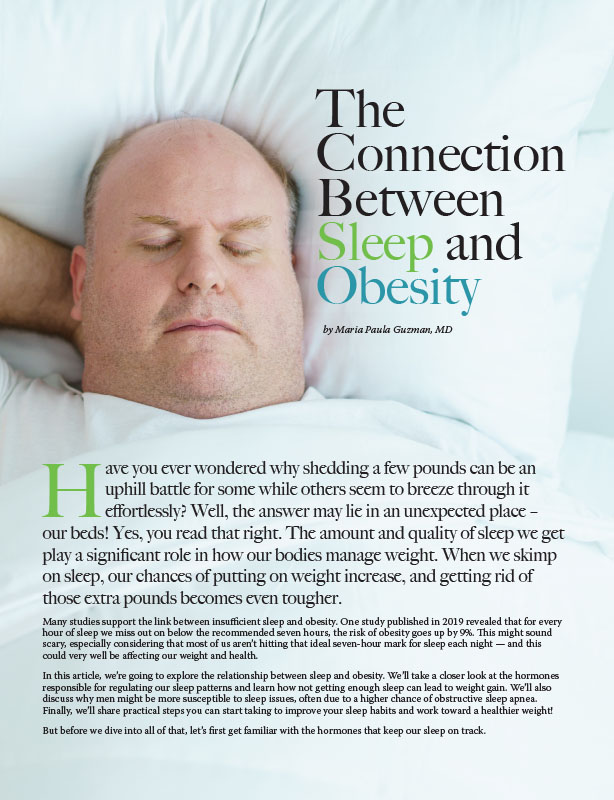HealthyDiningFinder.com: New Online Resource Identifies Healthier Choices at Restaurants

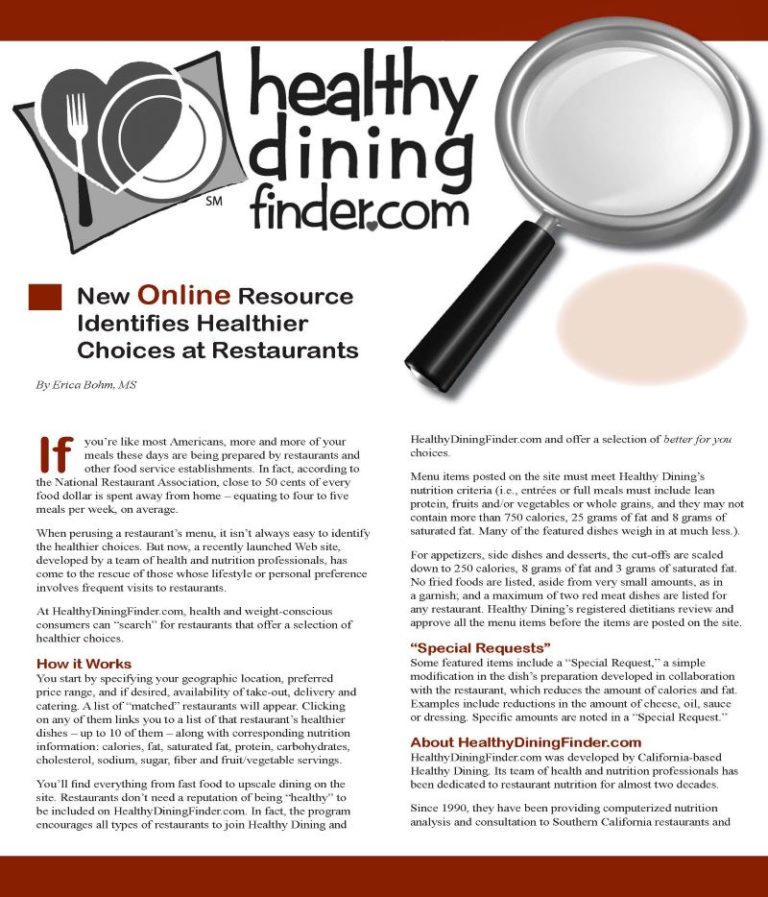
by Erica Bohm, MS
Winter 2008
If you’re like most Americans, more and more of your meals these days are being prepared by restaurants and other food service establishments. In fact, according to the National Restaurant Association, close to 50 cents of every food dollar is spent away from home – equating to four to five meals per week, on average.
When perusing a restaurant’s menu, it isn’t always easy to identify the healthier choices. But now, a recently launched Web site, developed by a team of health and nutrition professionals, has come to the rescue of those whose lifestyle or personal preference involves frequent visits to restaurants.
At HealthyDiningFinder.com, health and weight-conscious consumers can “search” for restaurants that offer a selection of healthier choices.
How it Works
You start by specifying your geographic location, preferred price range, and if desired, availability of take-out, delivery and catering. A list of “matched” restaurants will appear. Clicking on any of them links you to a list of that restaurant’s healthier dishes – up to 10 of them – along with corresponding nutrition information: calories, fat, saturated fat, protein, carbohydrates, cholesterol, sodium, sugar, fiber and fruit/vegetable servings.
You’ll find everything from fast food to upscale dining on the site. Restaurants don’t need a reputation of being “healthy” to be included on HealthyDiningFinder.com. In fact, the program encourages all types of restaurants to join Healthy Dining and HealthyDiningFinder.com and offer a selection of better for you choices.
Menu items posted on the site must meet Healthy Dining’s nutrition criteria (i.e., entrées or full meals must include lean protein, fruits and/or vegetables or whole grains, and they may not contain more than 750 calories, 25 grams of fat and 8 grams of saturated fat. Many of the featured dishes weigh in at much less.).
For appetizers, side dishes and desserts, the cut-offs are scaled down to 250 calories, 8 grams of fat and 3 grams of saturated fat. No fried foods are listed, aside from very small amounts, as in a garnish; and a maximum of two red meat dishes are listed for any restaurant. Healthy Dining’s registered dietitians review and approve all the menu items before the items are posted on the site.
“Special Requests”
Some featured items include a “Special Request,” a simple modification in the dish’s preparation developed in collaboration with the restaurant, which reduces the amount of calories and fat. Examples include reductions in the amount of cheese, oil, sauce or dressing. Specific amounts are noted in a “Special Request.”
About HealthyDiningFinder.com
HealthyDiningFinder.com was developed by California-based Healthy Dining. Its team of health and nutrition professionals has been dedicated to restaurant nutrition for almost two decades.
Since 1990, they have been providing computerized nutrition analysis and consultation to Southern California restaurants and publishing a series of books that feature healthier menu choices and corresponding nutrition information.
In 2004, the Centers for Disease Control (CDC) and Prevention awarded Healthy Dining a grant to develop an online, nationwide version of their Southern California publication-based program.
HealthyDiningFinder.com launched in March 2007. Approx- imately 50,000 restaurant locations are participating to date, and more restaurants are joining regularly. The first phase of the project has focused on chain restaurants – both nationwide and regional. In the coming months and years, outreach to smaller and independent restaurants will ramp up.
Through HealthyDiningFinder.com, consumers have an easy way to identify the healthier choices at restaurants. And equally important, the Healthy Dining Program is a vehicle that guides, motivates and recognizes restaurants with respect to offering and promoting healthier choices.
7 Myths about Restaurant Dining and Nutrition
1. Chicken and fish are always good choices.
Sure, chicken (specifically white meat) and fish are lower in calories, fat and saturated fat than red meat. However, other factors play a role as well, such as portion size, preparation method, and sauces and other added ingredients, like oil or cheese.
2. Red meat dishes are not good choices for the health-conscious.
True, the less red meat in the diet, the better. However, those who enjoy red meat can do so, keeping four guidelines in mind:
- Select lean cuts (like sirloin).
- Trim the visible fat.
- Limit red meat to once or twice a week.
- Monitor portion size.
Since 3-4 oz. of protein is the recommended portion size per meal, consider the following options when restaurant dining:
- Share a red meat entrée with your dining companion and complement it with a white meat entrée or extra side dish.
- Take some of the dish home to enjoy the next day.
- “Bank” part of your protein allotment from other meals of the day to allow for a larger portion during your meal out.
- Try Asian dishes, which often combine protein with vegetables, as they provide a great way to limit the amount of red meat.
3. Vegetarian dishes are always healthy.
Americans are falling short of the recommended servings of fruits and vegetables – sources of good nutrition. That doesn’t mean that all vegetarian dishes are good choices. Dishes that contain a lot of cheese, oil or nuts could be very high in calories, fat and even saturated fat (cheese). And some vegetarian dishes do not include many, or even any, vegetables. Be mindful, even when selecting vegetarian menu items.
4. Restaurant dining is for special occasions, so why not splurge a bit?
Decades ago, restaurant dining was, indeed, reserved for special occasions. But for many people today, restaurant dining is the norm, not the exception. Therefore, most people wouldn’t want to make every restaurant occasion an opportunity to splurge.
5. A heart next to a menu item indicates a low-calorie selection.
Sometimes, perhaps, but not necessarily. The heart may have been placed there because the dish contains heart-healthy olive oil, lacks preservatives, contains omega 3 fatty acids or is vegetarian. The best policy is not to make assumptions. Restaurants that have joined the Healthy Dining program may display the Healthy Dining logo on their Web site or menu. Participating restaurants agree to offer a selection of healthier menu choices, which are reviewed and “approved” by Healthy Dining’s dietitians.
6. Fast food restaurants do not have any good selections if you’re watching your weight.
You can get some great selections at fast food establishments, including salads, grilled chicken and fish, fruit, yogurt and even whole grains. There are always choices that will meet your calorie and fat budget.
7. It is easy to spot the healthier choices on restaurant menus.
Restaurant menu descriptions are not always complete, so you just do not have all the information required to make an informed choice. A knowledgeable server can be helpful, but diners looking for nutrition information will be best served by checking the Web sites of individual restaurants or visiting HealthyDiningFinder.com for a centralized source of nutrition information for restaurant meals.
About the Author:
Erica Bohm, MS, is vice-president and Director of Strategic Partnerships for Health Dining. Erica develops strategic partnerships within the restaurant industry and health community, coordinates restaurant enrollment and promotes the Web site to the media and the public. She has been with Healthy Dining since 1993.
by Sarah Muntel, RD Spring 2024 Spring has sprung, bringing sunnier and warmer days! For many, this…
Read Articleby Rachel Goldman, PhD, FTOS; Sarah Muntel, RD; and Stefanie Trilling Winter 2024 This section of Weight…
Read Articleby Maria Paula Guzman, MD Have you ever wondered why shedding a few pounds can be an…
Read Article




